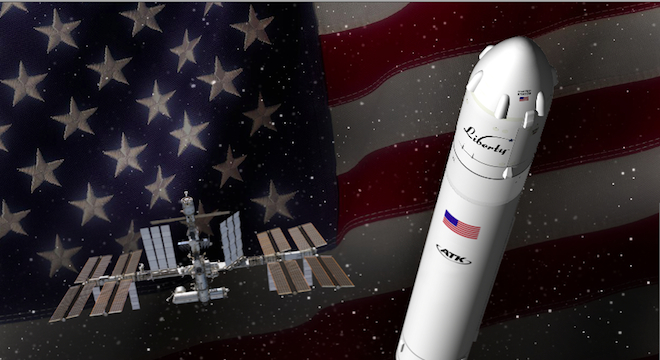A competition is currently underway between seven private spacecraft companies vying to replace the retired space shuttle when it comes to ferrying humans and crew into space, and NASA will soon announce the winners of the final round.
NASA’s spokesperson told TPM that the agency ultimately aims to select “more than one” transport providers for getting astronauts to the International Space Station, and the agency is likely to announce up to three funding awards soon.
The awards will be worth a total “between $300 and $500 million,” according to NASA’s spokesperson, and they will be announced in the “July/August” timeframe
NASA wants the winners to take the spot of the shuttle fleet, which was retired following the final flight of the shuttle Atlantis in July 2011. Currently, NASA astronauts have to hitch a ride aboard the Russian Soyuz vessel at a cost of upwards of $60 million per seat. NASA hopes that the commercial providers it is pitting against one another will be able to come up with a more cost-effective solution.
“The program is currently in a blackout period and we cannot discuss who has applied,” the NASA spokesperson said.
But it’s pretty clear just which companies are involved in this new commercial space race, also known as NASA’s “commercial crew development program,” or “CCDev,” for short.
Back in 2011, NASA signed agreements to fund four companies involved in the competition to the tune of a combined nearly $270 million.
The four companies represent the stark divide in space contractors these days. Two are the upstart offspring of Internet billionaires: Blue Origin, the creation of Amazon.com CEO Jeff Bezos, received $22 million. SpaceX, the brainchild of PayPal co-founder Elon Musk, picked up $75 million.
The other two companies are more traditional, coming from the U.S. defense aerospace contracting sector: Boeing was awarded $92.3 million and Sierra Nevada Corporation, a company that designs landing gear for U.S. Predator drones and is led by an enigmatic founder, received $80 million.
NASA also entered into “unfunded agreements” to collaborate on launch and orbital tourism efforts with three other partners: United Launch Alliance, a joint venture from Boeing and Lockheed Martin, defense contractors Alliant Techsystems and ATK, and private spacefaring company Excalibur Almaz.
In order to get the next round of funds, the companies will have to show NASA their technology offers an all-in-one solution for getting astronauts and crew into space.
“NASA is looking for a fully integrated system which includes a spacecraft, launch vehicle, ground operations and mission control center,” NASA’s spokesperson told TPM.
Last week, NASA went on a PR blitz, publicizing the recent successful tests and other gains made by the participants in the contest, tweeting from the official commercial crew development Twitter account.
“This week, we’ll show you the progress being made for future crewed missions to low Earth orbit, starting with @Boeing,” NASA’s commercial crew Twitter account posted on June 25, including a link to the following video demo of Boeing’s own experimental crew vessel, the CST-100, which has only been tested on the ground so far, and specifically the craft’s thrusters.
“Depending on NASA level of funding during the next phases of Commercial Crew program, we could begin flying test flights as early as 2015,” a Boeing spokesperson told TPM.
Following the Boeing video, NASA’s commercial crew development Twitter account posted another demo, this one of ATK’s Liberty Launch rocket, also currently under development.
“Liberty will give the U.S. a new launch capability with a robust business case and a schedule that we expect will have us flying crews in just three years, ending our dependence on Russia,” said Kent Rominger, vice president and program manager for Liberty, in a statement.
“NASA is investing in U.S. technologies that will help send astronauts back to the ISS and will push U.S. technology and innovation,” NASA’s spokesperson told TPM.
The agency’s plans to hold a fierce competition to replace the space shuttle and the Russian Soyuz vessel were almost axed by Congress early this year, with cost wary legislators contemplating cutting 40 percent of the commercial crew development program’s budget. Instead, NASA reached an agreement in June with Rep. Frank Wolf (R-VA), chairman of the House Commerce-Justice-Science Appropriations subcommittee to allow the program to continue but in a more limited scope, revising downward the number of awards from the four originally called for and awarded last time to “2.5,” that is, two full awards and one half-funded award, also changing the nature of the funding agreements to give NASA greater oversight of the development of the private craft.






